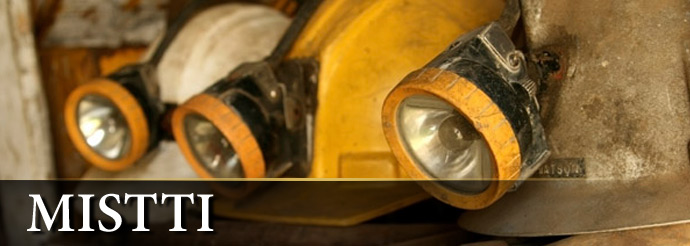
Three New Manuals Seek to Keep Miners Safe
The Mining and Industrial Safety Technology and Training Innovation (MISTTI) project, funded through the National Institute for Occupational Safety and Health, has worked to improve the health and safety of miners and other workers by enhancing and facilitating the introduction of new and existing technologies, training, and technology transfer approaches from government and private research facilities into the mining industry. In 2012 we completed three important training manuals that miners, trainers, and mine operators will be able to use to create a safer workplace.
Toolbox Training
Toolbox Training: Mine Safety features 33 scenarios in 11 general mine safety topics, ranging from avoiding roof and rib collapses in underground mines to guarding against highwall collapses and rollover accidents at surface mines. Our Emergency Preparedness and Worker Safety Training Program team researched 33 actual fatal mining accidents in the United States over the last decade and designed safety training around the common causes of those accidents. The scenarios are organized so that trainers or supervisors at a mine can deliver them in short, roughly 15-minute increments. Each of the topics features three real life scenarios, questions designed to get miners discussing similar safety scenarios at their mine or prep plant, a wealth of safety best practices around each topic, and illustrations highlighting many of those best practices. The manual received first place in the printed materials category of the 2012 Mine Health and Safety Training Materials Competition as part of the 2012 TRAM/National Mine Instructors Seminar sponsored by the U.S. Mine Safety and Health Administration (MSHA).
Dust Management
Another manual created through our Emergency Preparedness and Worker Safety Training Program also received recognition at the TRAM conference. The second manual, Dust Management: Protecting Your Health, highlights health hazards and other dangers dust presents in underground and surface mining, and it offers ways to manage dust effectively. It also addresses stricter standards proposed in 2010 by MSHA for how much respirable dust miners are allowed to breathe during a typical work shift. This manual received an achievement certificate at the 2012 Mine Health and Safety Training Materials Competition.
Crisis Management
A third manual we created is undergoing initial review by mining industry experts. The Mine Crisis Management Handbook: What to Do Before and During a Mine Crisis aims to prepare mine operators and other responsible persons at the mine with guidance on how to respond effectively to save lives and manage a mining emergency. The first part of this book provides checklists that command center personnel should follow when a mining accident occurs. Part two of the book helps in preparing a response should an emergency ever arise and is meant for planning and training.
